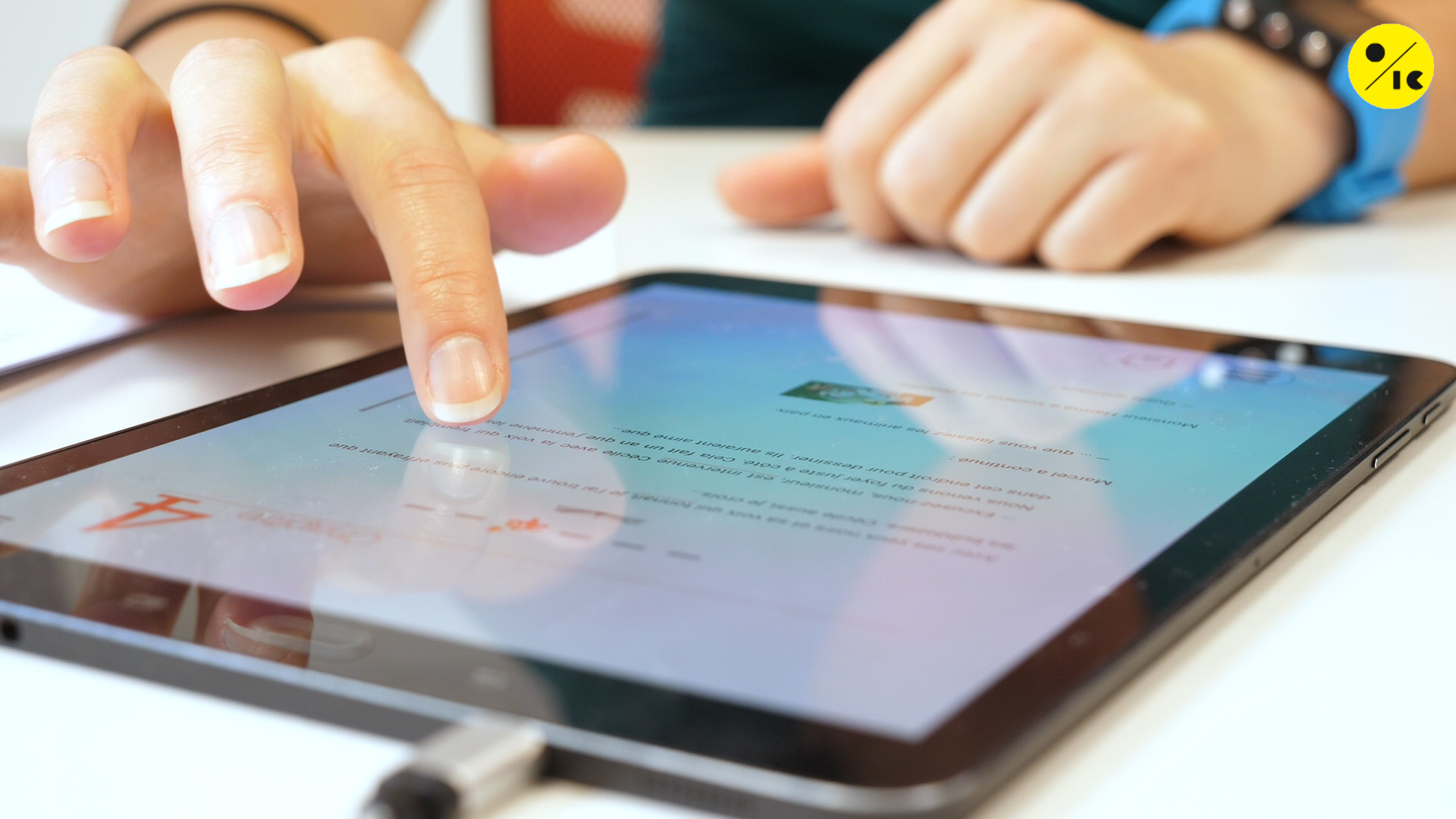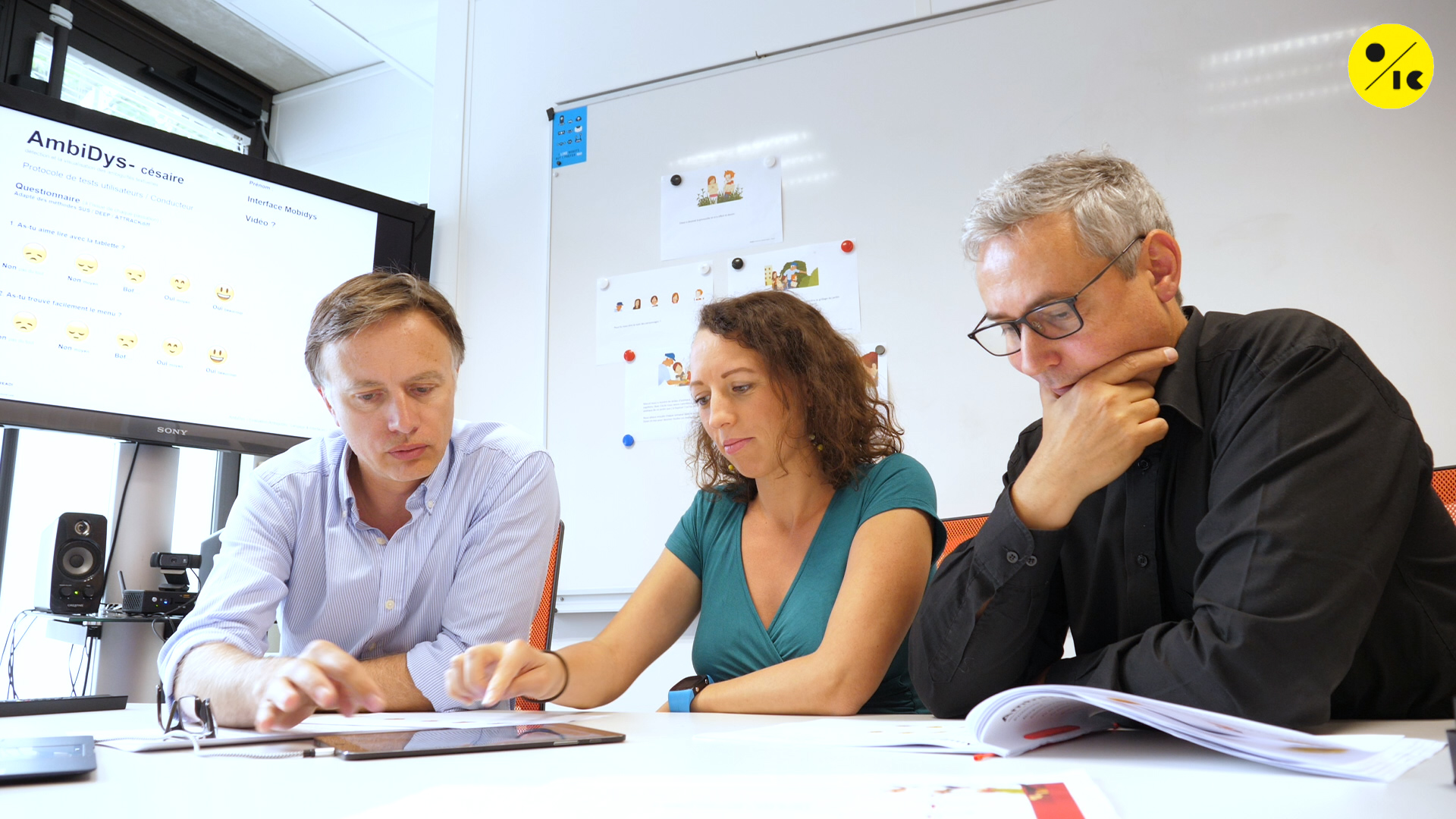Access to reading could give dyslexic children a gateway to culture and knowledge that otherwise they may feel deprived of, or at least hindered. Digital technology, a powerful tool for equality, may be able to help people with this disability so as to give everyone the pleasure of reading. This is the aim of AmbiDYS, a research project, supported by the West Creative Industries program and conducted in partnership with the MOBIDYS start-up.
AmbiDYS intends to develop an application for digital tablets that scans the text and detects ambiguities that a child may be confronted with. For example, a pronoun (he or she) whose reference in the story is unknown.
The project brings together computer science research (at the Laboratoire des Sciences du Numérique de Nantes) on language processing and the detection of text ambiguities with design research (READi design lab, École de design Nantes Atlantique) for the creation and evaluation of the interface.
face.
Research in automatic language processing
The AmbiDYS e-book proposes methods equivalent to those of speech therapists. Based on artificial intelligence technologies, it can help dyslexics with reading.
The project is run by the TALN (Traitement Automatique du Langage Naturel) team at the LS2N (Laboratoire des Sciences du Numérique de Nantes). This team is working on powerful text analysis methods that can be adapted to the diversity of written language data used on new communication media such as blogs, social media networks and forums, linking with other media or using different languages.
The challenge for TALN, a team who usually works on simplifying detected ambiguities by modifying the initial text, was to focus on the identification of anaphors described as “difficult”. This may be because the antecedent is located several sentences before the pronoun (and not just in the previous sentence) or because there are several candidate antecedents, particularly among the main characters in the book. This identification of difficult anaphors was a novelty for the laboratory and is the subject of ongoing research.
Research on the interface and “design for all”
The tool interface must be able to adapt to all uses and contents, facilitating the reading experience by organizing the text automatically so as not to separate words that belong to the same unity of meaning, for example.
Grégoire Cliquet, director of the READI Design Lab, considers that the project’s inclusive approach is quite unusual, as it places the end user (the child) at the centre of the reflections and objectives. The concept of “design for all” or universal design is applied. The objective is that the interface of the application should be usable by everyone, regardless of their abilities, age or culture. The aim is to avoid stigmatization or exclusion.
A transversal project that combines science and design to achieve a finished product
Solenn Quiniou, lecturer at the Université de Nantes (LS2N), says the school/laboratory/company partnership makes the research project atypical and exciting. Indeed, this is about developing a finished product that will be marketed and made available to the end user, with the involvement of the education system.
The last phase of tests, done in collaboration with speech therapists, aimed to evaluate the book’s user interface in order to validate its ergonomics and accessibility to dyslexics.
Multiple development perspectives
There are several opportunities for the AmbiDYS partners :
- Mobidys is currently focusing on the application of the approach to secondary school books for which there is strong parental demand. Many of these specialised books are available in primary schools, but they are much rarer for older students. The creation of a consortium has been envisaged that would involve a manufacturer from the publishing industry and draw up concrete applications.
- Finally, LS2N and L’École de design Nantes Atlantique are preparing a broader research project, targeting all learners of French (children and adults) and a wider range of texts, which will no longer be limited to children’s books.




